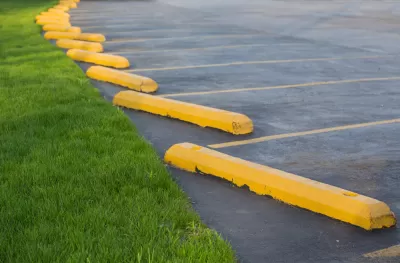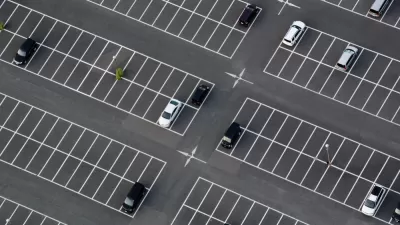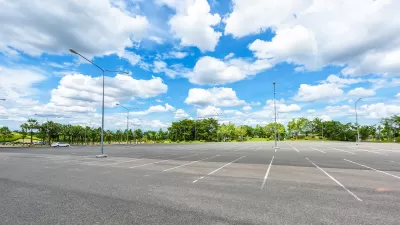The percentage of land dedicated to parking in the central districts of major U.S. cities ranges from 4 percent to as much as 42 percent.

A set of maps released by the Parking Reform Network highlights how much land is dedicated to parking in 50 U.S. cities, in large part because of minimum parking requirements, writes Marie Patino in Bloomberg CityLab.
According to the Parking Reform Network, “The worst-performing city analyzed is Arlington, Texas, with a parking score of 100, and 42% of the central city dedicated to parking.” Las Vegas is not far behind, with 32 percent of its central city dedicated to parking. “At the opposite end of the spectrum, San Francisco dedicates 4% of its central city to parking.”
As Patino explains, “The project is intended to put a fine point on just how much developable land in the US is occupied as space for nonmoving cars, and to provide a tool for advocates as more cities reconsider reforming their parking policies.”
Patino describes the recent trend to reverse these mandates and encourage denser development, also chronicled here. According to the article, “The Parking Reform Network has identified over 300 cities that have implemented, proposed, passed or planned some kind of parking reform, and 50 cities that have repealed parking minimum requirements citywide altogether.”
FULL STORY: MapLab: How Much Space Does Your City Dedicate to Parking?

Study: Maui’s Plan to Convert Vacation Rentals to Long-Term Housing Could Cause Nearly $1 Billion Economic Loss
The plan would reduce visitor accommodation by 25,% resulting in 1,900 jobs lost.

North Texas Transit Leaders Tout Benefits of TOD for Growing Region
At a summit focused on transit-oriented development, policymakers discussed how North Texas’ expanded light rail system can serve as a tool for economic growth.

Why Should We Subsidize Public Transportation?
Many public transit agencies face financial stress due to rising costs, declining fare revenue, and declining subsidies. Transit advocates must provide a strong business case for increasing public transit funding.

How Community Science Connects People, Parks, and Biodiversity
Community science engages people of all backgrounds in documenting local biodiversity, strengthening connections to nature, and contributing to global efforts like the City Nature Challenge to build a more inclusive and resilient future.

Alabama: Trump Terminates Settlements for Black Communities Harmed By Raw Sewage
Trump deemed the landmark civil rights agreement “illegal DEI and environmental justice policy.”

Dear Tesla Driver: “It’s not You, It’s Him.”
Amidst a booming bumper sticker industry, one writer offers solace to those asking, “Does this car make me look fascist?”
Urban Design for Planners 1: Software Tools
This six-course series explores essential urban design concepts using open source software and equips planners with the tools they need to participate fully in the urban design process.
Planning for Universal Design
Learn the tools for implementing Universal Design in planning regulations.
City of Santa Clarita
Ascent Environmental
Institute for Housing and Urban Development Studies (IHS)
City of Grandview
Harvard GSD Executive Education
Toledo-Lucas County Plan Commissions
Salt Lake City
NYU Wagner Graduate School of Public Service





























